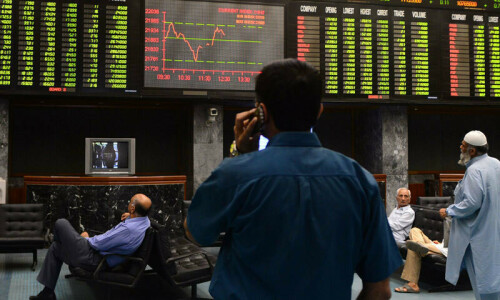 THE unbalanced use of fertiliser by farmers has produced troubling results. It has not only kept yield low but also affected soil almost beyond redemption, depleting fertility by mining of nutrients at an alarming rate and worsening multi-nutrient deficiency, particularly secondary and micro-nutrients. This has resulted in weaker crop response to fertiliser.
THE unbalanced use of fertiliser by farmers has produced troubling results. It has not only kept yield low but also affected soil almost beyond redemption, depleting fertility by mining of nutrients at an alarming rate and worsening multi-nutrient deficiency, particularly secondary and micro-nutrients. This has resulted in weaker crop response to fertiliser.
The reasons behind the unbalanced use of fertiliser are many, including the lack of adoption of soil test related recommendations, poor knowledge of farmers regarding balanced use – right product, dose, time and method – and depleting soil resources. And the farmers are put under pressure for additional ( usually unbalanced) use of fertiliser.
The pricing mechanism has also contributed its share in promoting unbalanced use of fertiliser. The government first progressively withdrew subsidies on fertiliser and then taxed it, taking it out of farmers’ financial reach.
In 1986, all subsidies on nitrogenous fertilisers were removed. In 1995, they were withdrawn from phosphate fertilisers and in 1997, from potassium fertilisers. As if all this was not enough, a 15 per cent general sales tax (GST) was imposed on all fertilisers in 2001. All these steps made fertiliser economics topsy turvey.
The farmers’ decision about how much fertiliser should be used on a specific crop is now linked to prices of that particular commodity rather than soil requirements. Higher fertiliser prices combined with lower crop prices only ensure low rates of fertilisers’ application.
Last Kharif, the usage of the DAP dropped by a staggering 70 per cent when its price went beyond Rs5,000 per bag.
The unbalanced use of fertiliser can be gauged from the fact that out of 160 million bags of fertiliser being sold in the country, 110 million bags are that of urea – being cheap as compared to other fertilisers – as against the sale of only 30 million bags of Di-ammonium phosphate (DAP). Only 20 million bags of other fertilisers are used. Even this equation regularly fluctuates in response to prices of fertiliser every cropping season.
Most of the farmers use urea when there is no need of it. Urea promotes vegetative growth, makes plant succulent and in the process also attracts insects and diseases because of vegetation.
It needs to be balanced with DAP, which is necessary for improving reproductive qualities of plant, strengthening the roots and developing resistance against insects and diseases. Thus, experts believe that selling of 160 million bags must be divided equally between DAP and urea – 80 bags of each. The government could help promote balanced use through a pricing formula.
The DAP price in the international market has come down to $400 per ton, which means that a 50Kg bag should not cost the manufacturers more than Rs1,600. Even if they are given a margin of Rs200 per bag, the cost should not go beyond Rs1,800. On the other hand, the official price of urea bag is Rs635. One way of balancing their prices could be to tax urea price, say at Rs600 per bag, and transfer the same amount as subsidy on DAP prices, bringing the prices of the two varieties close to Rs1,200 per bag.
The government should also promote investment in the fertiliser industry through incentives to reduce dependence on imports. Over 60 per cent of DAP is imported but the country is considered self-sufficient in urea. This year, however, it ended up importing even urea as domestic production plummeted. This exposed the entire sector to wide price fluctuations and severely effected consumption patterns.
Also, the combined use of fertilisers, organic manures and bio-fertilisers should be encouraged to check nutrient mining and correct multi-nutrient deficiency. Over the last few decades, dependence on chemical fertiliser has significantly increased as the official focus has shifted to raising per acre yield.
The government departments need to build farmers’ capacity for fertigation, laser leveling and fortified and customised fertilisers use. The single-minded focus on chemical fertilisers has promoted unbalanced use and affected soil fertility. The government should re-energise the agriculture extension system to train farmers in the best practices at the farm level.
Expanding soil testing infrastructure, both mobile and static, should also help in educating farmers in getting better results. The government should also adjust its subsidy regime to promote organic and nutrient-based fertiliser.
The government had targeted 5.2 per cent agricultural growth in its Medium Term Development Framework (2005-2010) to achieve self-reliance in agriculture commodities and ensure food security. Though it achieved over seven per cent growth rate in 2007 on the back of bumper cotton and substantial wheat crop, the momentum has largely been lost.
If the government wants to ensure that kind of growth at sustained level, it has to find ways for efficient, balanced and optimum use of chemical fertilisers along with organic and bio-sources.















































Dear visitor, the comments section is undergoing an overhaul and will return soon.